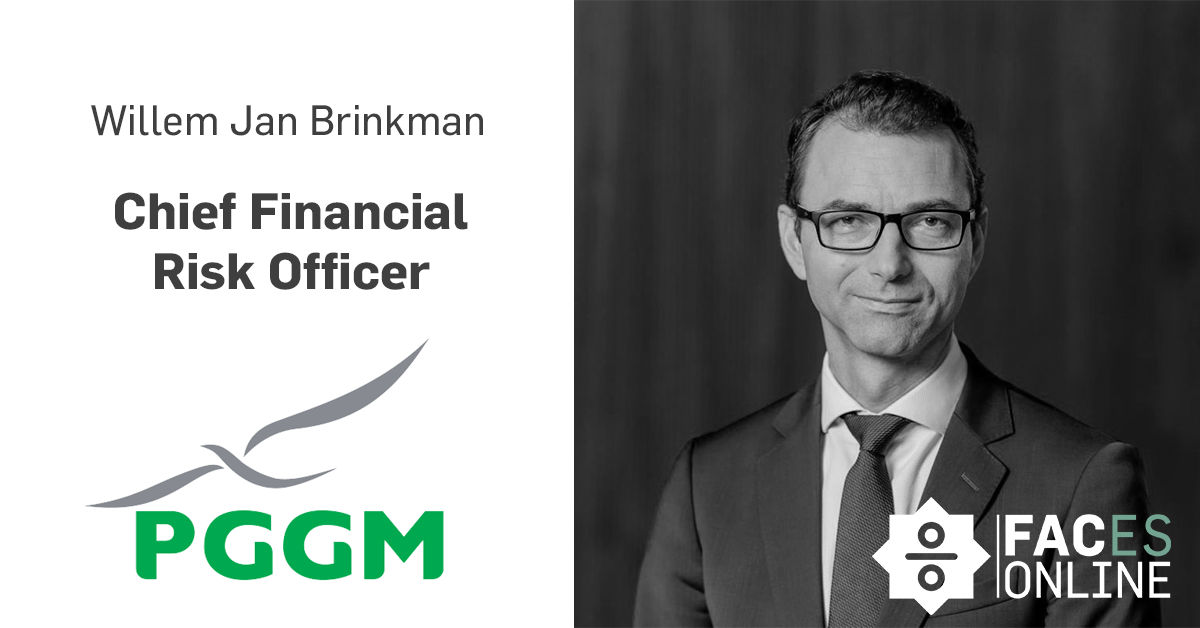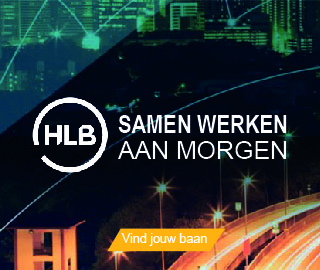For the Dutch version, click here
Since 2019, Willem Jan Brinkman has been CFRO of pension fund service provider PGGM. In this interview, he talks about his career and provides more insight into his work as CFRO. Besides, Brinkman shares his future vision of responsible investment within PGGM and how the affordability of pensions will develop in the upcoming years.
You studied Economics at the University of Groningen. Can you outline what your time as a student was like?
The study lasted five years in total because there was no split between the Bachelor and Master. I was active at the rowing club Aegir in Groningen. At the beginning of my studies, I was a very fanatical rower, but this became less so as I further progressed in my studies. During my studies, I did an internship at the headquarter of the Gasunie in Groningen. I finished my student years with a traineeship at PriceWaterhouse in the united states, a predecessor of PriceWaterhouseCoopers (PwC). I was able to do this traineeship through AIESEC, an organization that is still active today.
How did you experience the transition from studying to working?
The traineeship at PriceWaterhouse had a positive impact on my transition from studying to working. I ended up in the tax consultancy department advising rich people. You just had to work really hard there. For me, it was a huge transition to go from studying to working in a company. This traineeship also helped me to get a good idea of what working there actually entailed. In my student days, I found it difficult to form a good idea about this.
In 2015 you made the switch from KPMG to PGGM. Can you explain why you made this move?
At KPMG I was a partner in the M&A department, focusing on the financial sector. These were mainly transactions between banks, insurers, and asset managers. This transition was a nice switching point in my career. You’re in your early 40s and you ask yourself the question; ‘are you going to keep doing what you’re doing now or are you going to make a real change?’ The social mission that PGGM has appealed to me in particular, promoting the interests of employees in the care and welfare sector. The focus on responsible investment and SRI, for which PGGM is known, also appealed to me. Moreover, the scale of PGGM and the fund behind it (PFZW) means you can achieve a lot.
From my work at KPMG, I already had some contacts at PGGM. I had PGGM in my sights, but there had been no reason to actually start working there. The reason came from PGGM’s involvement in the Dutch Investment Institute, a new initiative for investing in the Netherlands. As PGGM was looking for someone who could contribute to this, I decided to make the switch.
Can you describe your day-to-day tasks as PGGM’s CFRO? How does your role differ from that of CFO?
I am CFRO, a combination of Finance and Risk. Therefore, I have two different perspectives in which I operate within the company. Together with the CEO, I form the board of directors. This means that every issue that involves board-level decision-making comes to my desk. Almost every issue contains a financial or risk component. This can be about the financial results, the risks related to the company, or about investigations taking place. Hence, my tasks are enormously diverse, and I really enjoy that, but all from a managerial role. However, it’s not my intention to get lost in all kinds of details. My job is to maintain a birds-eye view of the total process.
“I, therefore, expect people to look more closely at their pensions in the future.”
The difference between CFO and CFRO is a development in the market. Previously, it was common for a firm to have a CFO and a CRO who supervised. Currently, these two positions are often combined into CFRO, although in larger companies you still see this split occasionally. At PGGM we have two separate departments that exist side by side but report to me as CFRO.
Generally, pension funds focus on long-term affordability. To what extent do you focus on short-term financial instruments?
We are the pension administrator, which means that the pension funds are our clients. They have a certain policy with regard to the fund’s investments. PGGM is the party that implements this policy for the pension fund. So, you look at the coming years: what needs to be paid out and what is coming in?
A lot of liquidity is needed to be able to pay out money or make payments. The short-term part is then mainly taken care of by the treasury department of our asset management. This means that stock market-listed investments are held for shorter or longer periods, such as equities and credit. While investments in private markets are often really long-term, and for which we have built up large internal investment teams with a lot of specialist knowledge. An example is our team of forty people that make large investments in infrastructure, like for example the purchase of a water purification company that takes care of a city’s water supply. We usually hold these types of investments for a longer period of time, and they yield us a nice, stable dividend every year. We also do “structured investments,” such as what is known as Credit Risk Sharing transactions. Here we actually invest in the loan books of banks. These investments run for about 3 to 4 years.
To properly reflect affordability, we look at the coverage ratio. This is the ratio between the present value of the amount to be paid out and the money that is currently available. The value of the coverage ratio is very much influenced by the interest rate. When interest rates are low, your liabilities’ value is very high, which causes the coverage ratio to fall below 100 percent. Because of the impact of COVID-19 on the economy, the interest rate continued to fall in early 2020, so we are now at a funding ratio below 100 percent. By this logic, that means your current funds do not meet the outstanding payouts. This creates ‘feelings of stress’ in society and politics: should we start cutting pensions or not?
To better align pensions with social demands and relationships, such as the labor market, and to promote transparency, a new pension system is being introduced in the Netherlands. Currently, the amount you receive monthly when you retire is fixed; this is the nominal value of your pension. Under the new pension system, this nominal value will become more mobile; it could therefore be higher or lower. The term “affordability” will therefore be used in a different way in the future. More focus is laid on what the invested amount has yielded, rather than the amount that was actually required in nominal terms. A new movement in the market is a tool where people can see their pensions ‘daily rate. I, therefore, expect people to look more closely at their pensions in the future. We at PGGM must prepare ourselves to be able to provide this real-time information to participants by means of a digital application. Preparations for this new development are currently in full swing.
You have a separate ‘Responsible Investment’ division at PGGM. In what way does PGGM engage in responsible investment?
The Responsible Investment division is part of the asset management department. This department plays an important role in specific transactions that are being considered. Their task is to advise on whether the social impact of investment fits in with the standards we apply in our responsible investment policy.
Responsible investing is not just the job of the Responsible Investment department. The investment teams must also conduct analyses of the impact their investments have on the world. For this, we have different perspectives. The negative impact of investment can lead to the decision to refrain from investing, for example, when the investment causes excessive environmental damage or violates basic labor or human rights. Another angle concerns the positive impact. We want to make investments which, in addition to generating an attractive return, contribute to solutions for major issues, as set out in the Sustainable Development Goals, the SDGs.
In addition, we have made a serious effort in recent years in developing international standards in the field of sustainable investment. For example, by setting up a platform with other large investors that sets a standard for investing in the SDGs. This is an international collaboration to make responsible and sustainable investing comparable worldwide. If this standard is accepted in the world, and there is indeed a lot of interest in it, then the amount of capital that is sustainably invested will increase enormously. That is what we want.
Do you have a golden tip for the current student with which he/she could stand out from the rest?
Keep an open mind: from your studies, it’s hard to see exactly what work entails. If you start working somewhere, it can sometimes be disappointing. Making a switch is then inevitable. A traineeship can be the solution here, which we also offer at PGGM, similar to many other large companies. An internship can also help in this process. When I talk to people who are applying for a job, they can use their internship experience to explain why they want something or not at all. That’s a good topic for discussion.

















